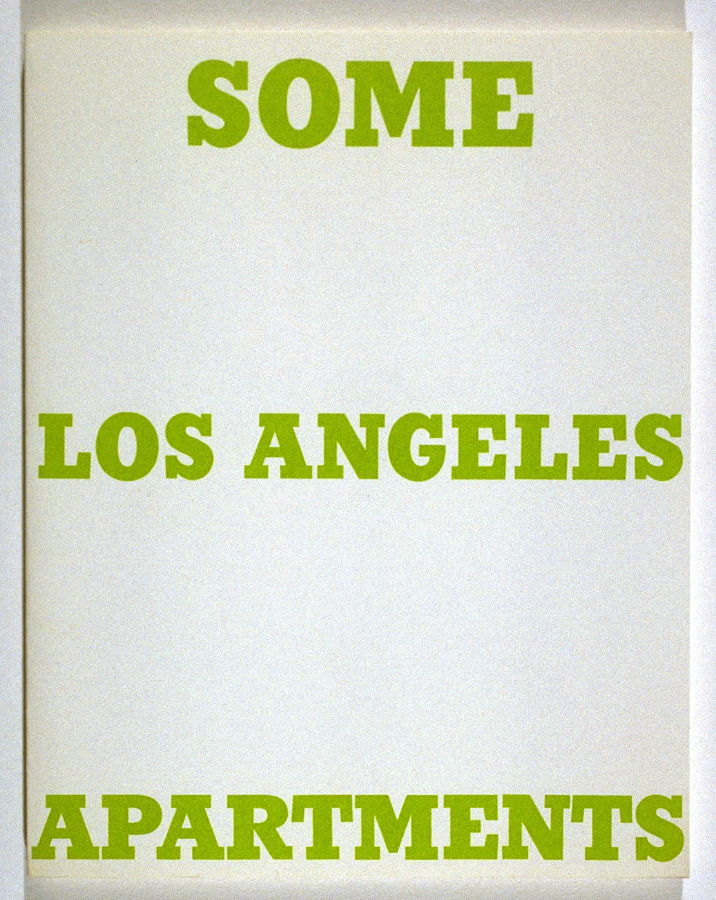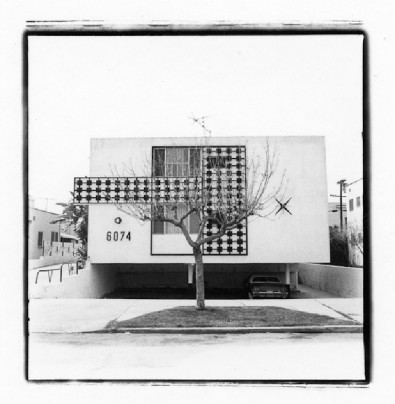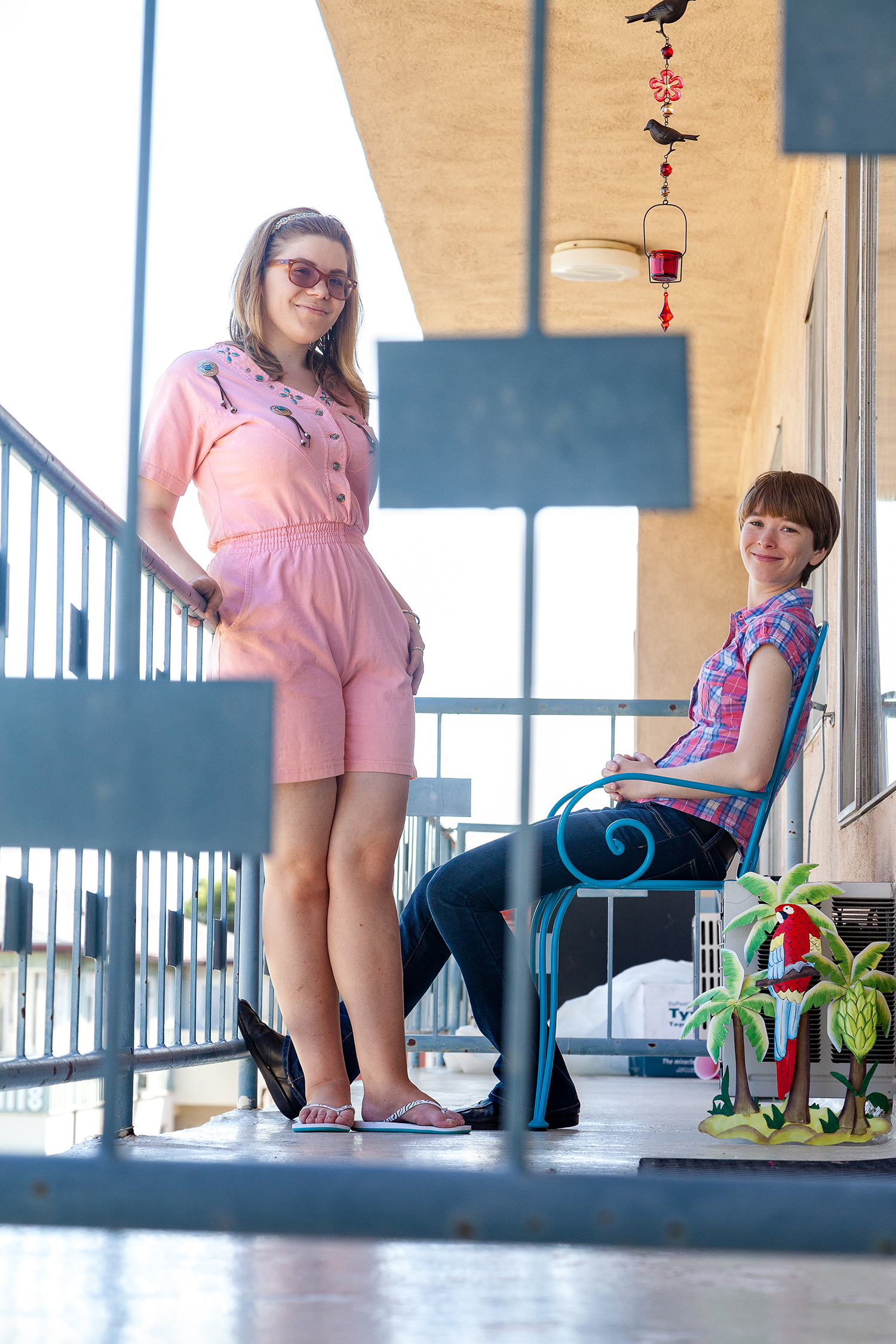Featured Artists
In addition to their significant role in the history of architecture and urbanism in Los Angeles, dingbats also figure prominently in the art world. Their flamboyant yet flat facades served as a muse, an anti-hero for the fraught relationship artists were developing with the world of consumer culture. Perhaps because of the fleeting nature of its popular styles, the dingbat quickly became the subject of photographic cataloging efforts, notably by artists Ed Ruscha beginning in the ’60s and Judy Fiskin in the ’80s. Contemporary artists have continued this trend while also examining the more human narratives that accompany these structures.
Ed Ruscha

Some Los Angeles Apartments
Ed Ruscha, 1965
edruscha.com
Frank Gehry

Danziger Studio,Frank Gehry, 1965
[Image credit: © Michael Moran]
[Text from Barbara Bestor’s Essay “Deeply Superficial: Excavating the Dingbat from the Art and Architecture Canon,” featured in the Dingbat 2.0 publication].
foga.com
Judy Fiskin

Untitled, Dingbat 1982-1983
© Judy Fiskin
In her various diminutive photographic series, artist Judy Fiskin explicitly refers to the technique of cataloging as a defining aspect of her larger artistic project. Selections from her Dingbat, 1982-1983 series are included in the Dingbat 2.0 publication and are discussed in Wim de Wit’s adjoining essay “Behind the Facade: Judy Fiskin’s Dingbat Photographs.” The dingbat series exemplifies and crystallizes her agenda and a larger zeitgeist of the era: serial documentation of the generic as a critique of the logic of postwar production and consumption.
© Judy Fiskin
judyfiskin.com
Paul Redmond

Untitled © Paul Redmond
Most photographic documentation of dingbat apartments follow traditions primarily intended to capture architectural or graphic composition. In the photographic series included in Dingbat 2.0, “Micro-Modifications: Stories of Dingbat Dwellers,“ Los Angeles-based photographer Paul Redmond instead approaches the dingbat through its inhabitants, their stories, and their traces. By selecting one neighborhood and walking its streets, Redmond was able to meet residents and hear their perspectives on living in a dingbat.
 Untitled © Paul Redmond
Untitled © Paul Redmond
Deftly attuned to both narrative and physicality, Redmond’s photographs display the range of different lifestyles possible within a single building type—the minor adjustments necessary to make a space temporarily livable, the accumulations over time, and the more calculated planning of long term residents. The stories of these inhabitants relate typical narratives of apartment life as well as the more specific scenes of dingbat life in Los Angeles.
paul-redmond.com